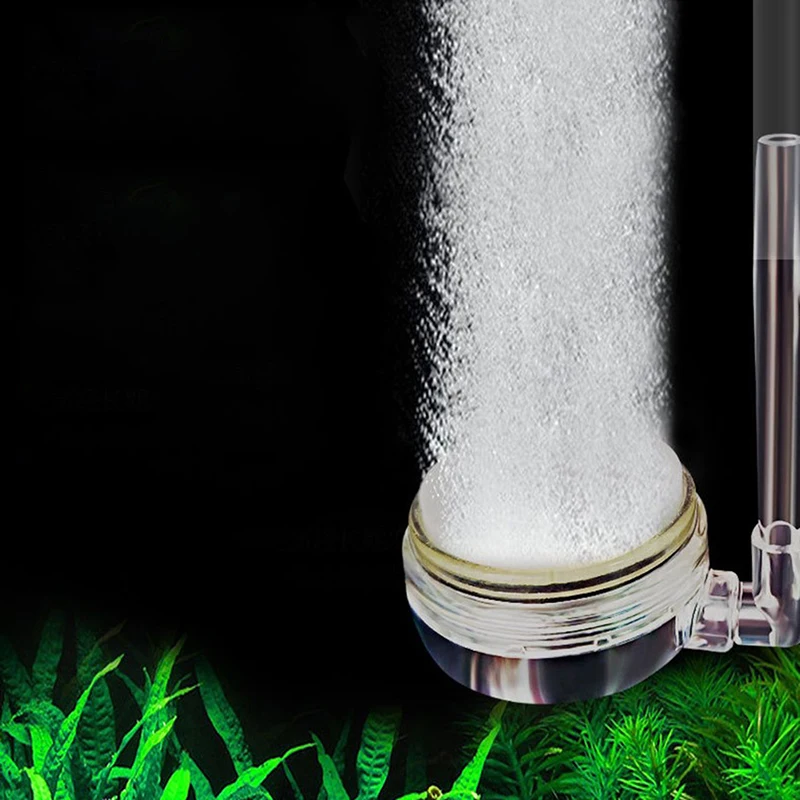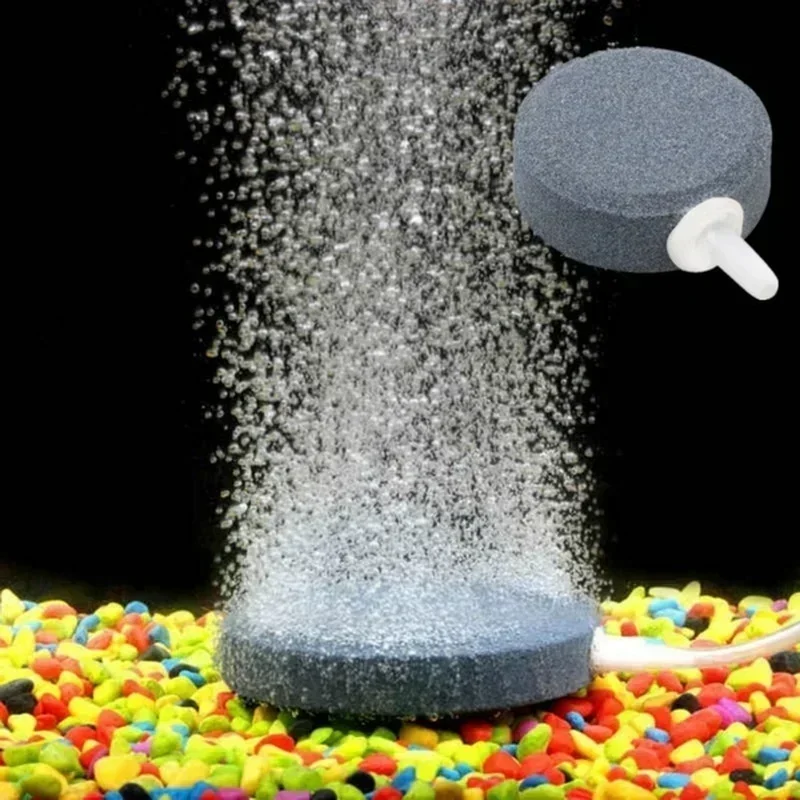Maintaining optimal oxygen levels in a fish tank isn’t just beneficial; it’s crucial for the well-being of your aquatic life. Fish and other tank inhabitants rely on dissolved oxygen to survive, thrive, and exhibit their natural behaviors. Poor oxygenation can lead to stress, illness, and even fatalities. Worried about the oxygen levels in your aquarium? Here are 10 simple and effective ways to boost oxygen levels in your fish tank.
1. Utilize an Air Pump
Air pumps are among the most common solutions for increasing oxygen levels in a fish tank. They work by drawing air into the water through air stones or diffusers, increasing surface agitation and promoting gas exchange. Air pumps are easy to install and come in various sizes suitable for different tank capacities. When selecting an air pump, ensure it’s powerful enough for your tank’s volume. Additionally, placing multiple air stones strategically around the aquarium can evenly distribute oxygen, reducing stress and creating a more vibrant environment for all species. Regular maintenance of the air pump and stones is necessary to keep the system efficient: clean the stones periodically to prevent clogging, and check the pump’s output to ensure it’s working effectively.

2. Incorporate Live Plants
Live plants aren’t just aesthetically pleasing; they play a pivotal role in maintaining a healthy aquarium ecosystem. Plants undergo photosynthesis, a process where they take in carbon dioxide and release oxygen during daylight hours. Species such as Anubias, Amazon Sword, and Java Fern are particularly effective in boosting oxygen levels. However, the benefits extend beyond oxygen production. Live plants also absorb nitrates and other harmful substances, contributing to overall water quality. To maximize oxygenation, ensure that your tank has a suitable light source to support plant growth. Balance is key; over-planting can sometimes lead to oxygen depletion at night when plants respire and consume oxygen. A well-arranged aquatic garden, monitored and maintained, can thus be a very effective natural way to improve oxygen levels in your tank.
3. Increase Water Movement
Water movement is crucial for maintaining high oxygen levels in any aquarium. Equipment like powerheads, wave makers, and even strategically placed filters can enhance water circulation. By creating currents, these devices ensure that oxygen-rich surface water mixes with lower layers, promoting even distribution throughout the tank. Powerheads and wave makers mimic natural aquatic environments, giving fish a sense of their habitat, which can reduce stress and improve overall health. When using these devices, it’s important to consider the tank inhabitants—some fish may prefer still waters, while others thrive in more turbulent conditions. Adjusting flow rates and placements to suit the needs of your fish will optimize their living conditions and ensure a well-oxygenated environment.
4. Perform Regular Water Changes
Fresh water is naturally rich in oxygen, making regular water changes an effective way to boost oxygen levels in your tank. It’s recommended to change about 25-30% of the water every week, depending on the tank’s bioload and residents. This practice not only supplies fresh oxygen but also removes waste products and other contaminants that can lower water quality. During water changes, use dechlorinated water and ensure it matches the tank’s temperature to avoid shocking your fish. Regular vacuuming of the substrate can also remove detritus and uneaten food, further enhancing water quality. Consistent maintenance helps sustain a stable, oxygen-rich environment, which is vital for the health and longevity of your aquatic pets.
5. Test and Balance Your Water Parameters
The chemical composition of your tank water can significantly impact oxygen levels. Testing water parameters such as pH, ammonia, nitrite, and nitrate levels regularly is vital. High levels of ammonia and nitrites are harmful and can decrease oxygen levels. pH levels also influence the solubility of oxygen; maintaining a stable pH within the ideal range for your tank inhabitants is essential. Utilize test kits to monitor these parameters and make necessary adjustments. Products like ammonia neutralizers, water conditioners, and pH stabilizers can help maintain balanced water chemistry. By ensuring optimal conditions, you create an environment where oxygen levels remain high and consistent, benefitting all aquatic life in the tank.
6. Avoid Overcrowding Your Tank
Overcrowding is a common issue that can lead to low oxygen levels. Each fish requires a certain amount of space and oxygen. Overpopulated tanks have higher bioloads, leading to increased waste production and a higher demand for oxygen. To prevent overcrowding, research the space and oxygen requirements of each species you plan to keep. Keeping fewer fish or choosing smaller species can help maintain a balanced and well-oxygenated tank. Also, consider the swimming habits and space needs of different fish to ensure they have adequate room to move and thrive. Proper stocking not only reduces stress but also ensures that oxygen levels remain adequate, creating a healthier environment for all inhabitants.

7. Use a Surface Skimmer
Surface skimmers are effective devices designed to remove oily films and other debris that accumulate on the water’s surface. These films can hinder gas exchange, leading to decreased oxygen levels. Installing a surface skimmer in your aquarium helps maintain a clear surface, enhancing oxygen absorption and carbon dioxide release. Skimmers also contribute to overall water clarity and cleanliness, providing a healthier environment for your fish. They can be particularly beneficial in planted tanks where organic matter tends to accumulate. Regular cleaning and maintenance of the surface skimmer are necessary to ensure optimal performance. By keeping the water surface clean, you significantly improve the gas exchange process, boosting oxygen levels in your tank.
8. Adjust Tank Placement and Lighting
The placement and lighting of your tank can influence oxygen levels. Positioning the tank in a well-ventilated area can enhance the oxygenation process. Avoid placing the tank in enclosed spaces where airflow is limited, as this can reduce oxygen availability. Proper lighting is crucial for tanks with live plants. Adequate light supports photosynthesis, contributing to oxygen production during daylight hours. However, balancing light exposure is key—too much light can lead to excessive algae growth, which can consume oxygen, especially at night. Using a timer to regulate light duration ensures a consistent light-dark cycle, supporting plant health and maintaining stable oxygen levels. Thoughtful placement and lighting adjustments can significantly impact the overall health of your aquarium ecosystem.
9. Select Appropriate Tank Mates
Choosing the right tank mates is essential for maintaining optimal oxygen levels. Different species have varying oxygen requirements and compatibility considerations. Some fish are more active and require higher oxygen levels, while others are less demanding. Research the oxygen needs and compatibility of each potential tank inhabitant to ensure they can coexist harmoniously without straining the oxygen supply. Avoid mixing species with vastly different needs, as this can lead to stress and imbalances in oxygen levels. Additionally, consider the bioload capacity of your tank when selecting tank mates; a well-balanced community will prevent overcrowding and ensure adequate oxygen for all inhabitants. Thoughtful selection contributes to a stable and healthy aquarium environment.

10. Keep Aquatic Equipment in Good Condition
Regular maintenance of all aquarium equipment is essential to ensure efficient operation and optimal oxygen levels. Clean filters, pumps, and air stones regularly to prevent clogging and reduce the risk of malfunction. Check for worn-out or damaged parts and replace them promptly to maintain effective water circulation and oxygenation. Neglecting equipment can lead to decreased performance and lower oxygen levels, endangering your fish. Additionally, ensure that heaters and other devices are functioning correctly, as temperature fluctuations can impact oxygen solubility. Keeping your equipment in good working order not only promotes a healthy environment but also extends the lifespan of your investment, providing long-term benefits for you and your fish.
Implementing these 10 simple and effective ways to boost oxygen levels in your fish tank can transform the health and vitality of your aquatic environment. By utilizing air pumps, incorporating live plants, enhancing water movement, and performing regular maintenance, you create an oxygen-rich habitat where your fish can thrive. Regular monitoring and thoughtful adjustments ensure that the balance is maintained, contributing to a stable and harmonious aquarium ecosystem. Prioritizing the well-being of your aquatic pets through diligent care and attention to oxygen levels will reward you with a vibrant and flourishing underwater world.










